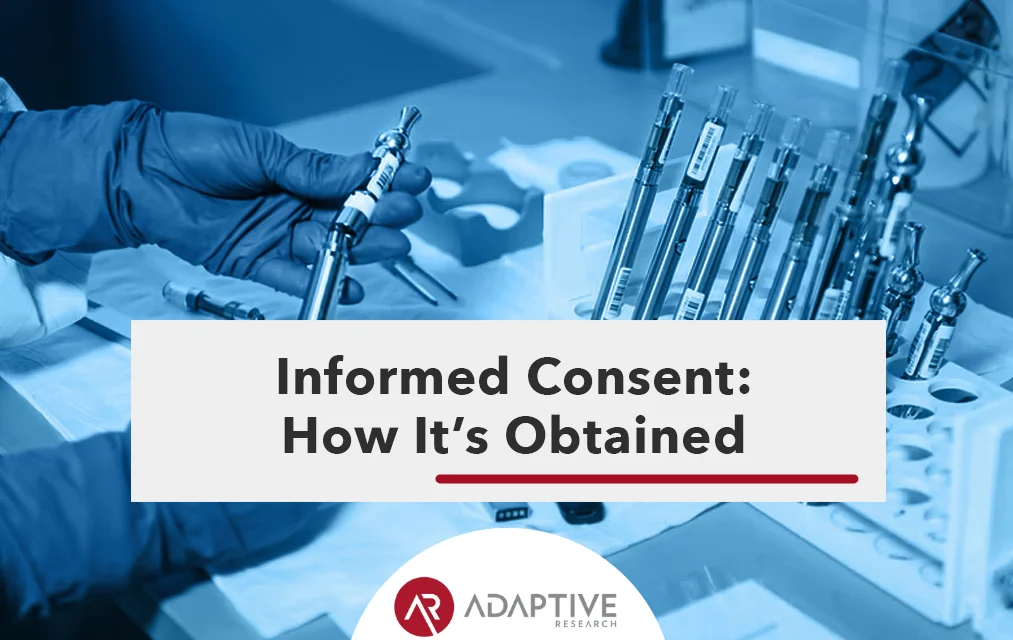One of the most important aspects of clinical trials is obtaining informed consent from all patients. The word “informed” is critical here because it underlines that researchers must explain the purpose, procedures, and potential benefits of research in order for study participants to honestly give informed consent before enrolling in a trial.
Informed consent is also a legal requirement of a clinical trial that requires a clinical trial sponsor to provide prospective participants with adequate information about the trial. The U.S. Food and Drug Administration (FDA) regulates the safety and efficacy of drugs and medical devices. Patients must understand the trial’s objectives, risks, and benefits to make an informed decision about participating in a clinical trial.
The Importance of Informed Consent
Authorization is given or withheld by the patient after being informed of all pertinent facts regarding the study. A researcher cannot ethically enroll human participants into a clinical trial unless they have gained informed consent from them.
When patients are informed of the risks and benefits associated with a clinical trial, they can then determine whether or not to participate. This process ensures that research is performed ethically.
This process protects both patients and researchers, ensuring that all parties involved are protected in the event that issues arise later about whether consent was adequately obtained or if the study was adequately explained.
Informed consent is obtained through written documents, verbal explanation, audio presentation, visual aids, or some combination thereof.
Why is Informed Consent Obtained?
Informed consent is obtained for the following purposes:
- To protect the rights and welfare of human research participants. The Federal policy on human research participants is intended to ensure that adequate information about potential benefits and risks are described in a clear, understandable way. This allows people to make free, voluntary, and informed decisions about whether or not they wish to participate in a research study.
- To avoid misunderstandings about what will be required as part of the proposed research. These misunderstandings may occur because participants expect a treatment that is different from that actually received.
- To make sure individuals know what may happen to them if they participate in the research, rather than leaving the decision only to their physician or someone else involved in treatment.
- To motivate people to participate by ensuring that they are fully informed about the nature of the study and any potential benefits associated with it.
- To maintain the free and informed choice of participants about whether or not to participate in the research. When participants are free to withdraw from a study at any time, there is no pressure on them to participate.
- To protect study subjects from physical and mental discomfort by allowing them the freedom to withdraw from the study at any time.
- To protect study participants from deception by ensuring that they are fully informed about what will occur in the course of the research and that all information is kept confidential.
How is Informed Consent Documented?
All information should be given to the participants before they consent.
The FDA states that informed consent must include:
- A statement that participation is entirely voluntary and that the person may stop at any time without penalty or loss of benefits to which he or she is otherwise entitled.
- Identify who will do what and when, including a description of all procedures, drugs, or other products administered as part of the research protocol.
- A statement describing any potential discomfort to the subject.
- A statement of any benefits that the participant or others might expect as a result of participating in the study.
- If the research entails a higher level of risk, an explanation of whether or not compensation and medical treatment are available in the event of harm, and if so, how to receive them.
In addition to this list, informed consent must also include contact information for someone both parties can contact with concerns about their participation in the research.
It is essential that consent be obtained, although it is not always required to obtain written consent. If informed consent is waived, this should be documented with a statement of approval from an Institutional Review Board (IRB) or equivalent body along with evidence that the participants are seen as competent to give “assent ” to participation in the research.
Obtaining Informed Consent From a Minor
There are several ways to obtain consent from a child before using an intervention or conducting a study in clinical practice. Children cannot provide consent; however, they may give their assent by discussing the experimental procedure before proceeding with treatment. A parent or guardian must give permission for a child to participate in research by signing a written consent form.
Final Notes
To conclude, inferences can be drawn about informed consent by reviewing its legal definition, assessing the clinical setting in which it’s obtained, and considering the language used to describe the process. The article explains how informed consent occurs in a clinical setting.






